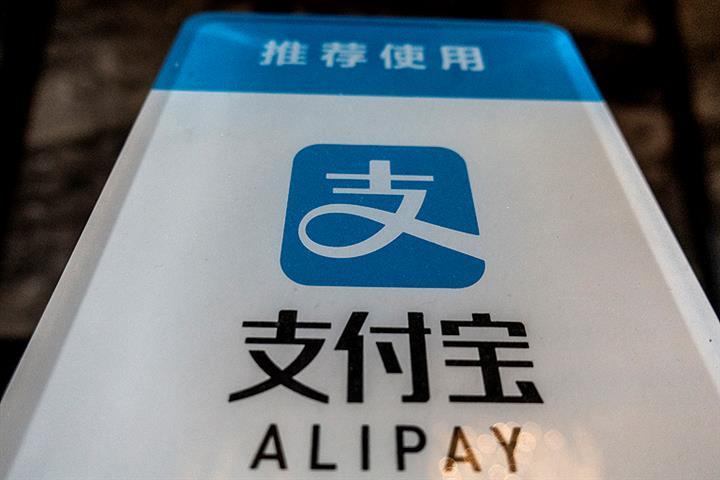Ms. Lilis built a thriving business producing earthworm powder, a traditional remedy for typhoid fever in Indonesia, with the help of microloans from Amartha, an Indonesia-based fintech firm. What stands out is how she transformed from being a housewife worried about affording her children’s education to running a business that produces over 100 kilograms of earthworm powder monthly, generating approximately 100 million rupiah (S$8,190).
Key points from the article:
- Amartha provides microloans (ranging from $400 to $1,330) to women micro-entrepreneurs in rural Indonesia, who often lack access to traditional banking services.
- The fintech firm utilises a unique AI-powered credit scoring system that leverages alternative data points, such as the type of tiles in a borrower’s home, to assess creditworthiness.
- Borrowers repay loans through a joint responsibility model where they form groups of 15-20 members who help each other make payments.
- UOB Venture Management invested in Amartha in 2019, helping it scale from supporting 343,000 women-led micro-enterprises to over 2.6 million across 50,000 villages.
- The impact investing approach takes a “double bottom line” approach, measuring both financial returns and social impact.
Ms. Lilis’s story is particularly compelling because she entered a male-dominated field that many women avoided due to its demanding nature. With her initial 4 million rupiah loan, she purchased an oven that transformed her production capacity. Subsequent loans allowed her family to upgrade to a larger house with space to expand the business further.
Analysis of Lilis Suhartini’s Earthworm Powder Business Growth
Business Evolution and Growth Trajectory
Lilis Suhartini’s business demonstrates a remarkable growth path from a small home operation to a thriving micro-enterprise:
Initial State:
- Started as a housewife with her husband earning just $200/month as a silkworm farmer
- Identified a market opportunity in medicinal earthworm powder
- Initially produced small batches, selling to a local herbal drink shop
- Early monthly revenue:
5 million rupiah ($410)
Current State:
- Monthly production: 100+ kg of earthworm powder
- Monthly revenue:
100 million rupiah ($8,190) - Employs 4 workers
- Operates from a larger home with dedicated production space
- Supplies pharmaceutical companies (significant client upgrade)
This represents approximately a 20x revenue growth from her starting point, showing how microfinancing can create a substantial economic impact.
Funding Journey and Capital Utilisation
Lilis accessed capital through a strategic series of microloans from Amartha:
- Initial Loan (2022): 4 million rupiah (~$327)
- Used for: Purchasing a large 150cm x 70cm oven
- Impact: Critical production capacity expansion
- Second Loan (2023): 5 million rupiah (~$410)
- Used for: Home upgrade and business expansion
- Third Loan (2024): 7 million rupiah (~$573)
- Currently being serviced (50-week repayment period)
- Used for: Further business expansion
These sequential loans show a pattern of:
- Starting with production capacity investments
- Scaling physical infrastructure
- Reinvesting profits alongside new capital
The loans were relatively small but provided crucial working capital at key stages of growth. The business’s success enabled each subsequent loan to be larger than the previous one, demonstrating improved creditworthiness and business stability.
The Amartha Financing Model Specifics
Amartha’s approach with Lilis exemplifies their microfinance methodology:
- Alternative Credit Assessment: Used non-traditional indicators to evaluate creditworthiness
- Joint Responsibility Model: Grouped Lilis with 15-20 other borrowers who collectively ensure repayment
- Financial Education: Provided bookkeeping training during weekly repayment sessions
- Digital Transformation: Shifted from time-consuming in-person payments to digital repayments via the AmarthaFin app in 2024
This comprehensive approach provided not just capital but also the skills and community support system needed for success.
ASEAN Microfinance Context
Lilis’s story reflects broader microfinance trends across ASEAN:
- Microfinance Gap: Across Southeast Asia, an estimated 70% of MSMES remain underbanked or unbanked
- Gender Focus: Women entrepreneurs are targeted explicitly as they often face more significant barriers to traditional financing
- Fintech Revolution: Traditional microfinance institutions are increasingly evolving into fintech platforms (as Amartha did in 2016)
- Joint Liability Groups: The group responsibility model used with Lilis is standard throughout ASEAN microfinance, inspired by the Grameen Bank model.
Indonesia’s microfinance needs are particularly significant, given its extensive geographic spread across more than 17,000 islands and a large rural population. The OJK (Financial Services Authority) has created regulatory frameworks to formalise and protect this sector, including the interest rate cap of 0.3% daily mentioned in the article.
Singapore Connection and Regional Investment Landscape
The UOB Venture Management connection provides essential context for Singapore’s role in regional development:
- Singapore serves as a financial hub, channelling capital to underserved markets across ASEAN
- UOB Venture Management’s Asia Impact Investment Fund represents the growing trend of impact investing from Singapore-based institutions
- Their “double bottom-line” approach, measuring both financial returns and social impact, aligns with Singapore’s regional development goals.
Singapore’s financial institutions are increasingly looking beyond their small domestic market to find growth opportunities across ASEAN, particularly in Indonesia, which boasts a large population and rapid digitalisation.
Future Growth Potential
Lilis’s future plans indicate further scaling potential:
- Additional oven capacity investments
- E-commerce market expansion beyond local sales
- Training other women in her village to join the industry
These growth vectors would require additional capital but could potentially scale her operation from a micro-enterprise to a small or medium enterprise, creating more employment opportunities in her village.
Comparison to Similar ASEAN Businesses
Lilis’s business model shares characteristics with other successful ASEAN micro-enterprises:
- Value-added processing of local raw materials (similar to coconut processing in the Philippines or traditional medicines in Thailand)
- Traditional knowledge commercialisation (leveraging culturally-specific health products)
- Supply chain position improvement (moving from raw material collection to processing)
- Female entrepreneurship in traditionally male-dominated sectors
The 20x revenue growth achieved by Lilis is exceptional but not unprecedented among successful microfinance recipients across ASEAN.
Conclusion
Lilis Suhartini’s business demonstrates how targeted microfinance combined with practical financial education can transform a small income-generating activity into a sustainable business. Her growth trajectory exemplifies the potential of microfinance to address the missing middle financing gap in ASEAN, particularly for women entrepreneurs. The Indonesian regulatory environment and Singapore-based impact investment together create an ecosystem that enables such success stories while protecting vulnerable borrowers.
Fintech Revolution in Funding and Payments: A Comprehensive Analysis
The Transformation of Traditional Financing Models
Microfinance Evolution Through Technology
Fintech has fundamentally transformed microfinance from a high-touch, paper-based system to a digital ecosystem with expanded reach and efficiency. Amartha’s evolution exemplifies this transformation:
Traditional Microfinance Limitations:
- High operational costs requiring physical presence
- Limited geographic coverage due to infrastructure needs
- Manual credit assessment processes
- Time-consuming cash handling and collection
Fintech-Enabled Improvements:
- Digital loan origination and servicing
- AI-powered alternative credit scoring
- Mobile payment infrastructure
- Lower cost structures allowing smaller loan sizes
- Data analytics for portfolio risk management
This digitalization has dramatically reduced the cost-per-borrower, allowing organizations to serve populations previously considered too expensive to reach.
Alternative Credit Scoring Mechanisms
Perhaps the most revolutionary aspect of fintech’s impact is the development of alternative credit assessment models:
- Traditional banking typically requires credit history, formal employment records, and collateral
- Fintech models leverage:
- Digital footprints and transaction history
- Psychometric testing
- Social connections and community reputation
- Alternative data points (as noted with Amartha using home characteristics)
- Machine learning algorithms to identify previously invisible patterns
These new assessment approaches have unlocked capital for millions previously deemed “uncreditworthy” by traditional banking standards. Research indicates that alternative scoring models can expand credit access while maintaining or even improving default prediction compared to traditional methods.
Peer-to-Peer and Marketplace Lending
The ability to directly connect capital providers with capital seekers has created entirely new funding channels:
- Direct matching of lenders and borrowers
- Fractional investment allowing diversification across many loans
- Geographic barriers elimination between urban capital and rural need
- Transparency in loan utilization and impact
Amartha’s shift from a traditional microfinance institution to a peer-to-peer platform in 2016 allowed them to tap into urban investor pools, dramatically scaling their impact from 343,000 to over 2.6 million women entrepreneurs.
Payments Revolution and Financial Inclusion
Mobile Money and Digital Wallets
The payments landscape has been particularly disrupted by fintech innovations:
- Mobile money systems have leapfrogged traditional banking infrastructure
- Digital wallets reduce the friction and cost of daily transactions
- Real-time payment networks eliminate settlement delays
- QR code payments require minimal technology investment from merchants
The article specifically mentions how the AmarthaFin app allowed Lilis to save significant time by switching from in-person to digital repayments, illustrating the practical benefits beyond convenience.
Financial Inclusion Impact
Fintech payment solutions have dramatically expanded financial inclusion metrics across ASEAN:
- Reduced transaction costs: Digital payments can be 90% cheaper than cash handling
- Geographic barriers overcome: Remote areas are now accessible without physical branches
- Formal financial history creation: Digital transactions build credit records
- Reduced corruption and leakage: Direct transfers eliminate intermediaries
- Women’s financial autonomy: Private digital accounts increase control over finances
This payment revolution often serves as an onramp to other financial services, with payment data enabling access to credit, insurance, and savings products.
Regional Nuances in ASEAN Fintech Development
Indonesia’s Fintech Landscape
Indonesia presents unique challenges and opportunities for fintech:
- Geographic complexity: 17,000+ islands necessitating digital solutions
- Regulatory framework: OJK’s forward-looking but protective stance
- Demographic dividend: Young, increasingly smartphone-equipped population
- Urban-rural divide: Significant infrastructure and income gaps
Indonesia’s fintech growth has been explosive, with over 150 registered fintech lenders and numerous payment platforms, addressing specific challenges like rural banking access and religious considerations (Sharia-compliant offerings).
Singapore as a Fintech Investment Hub
Singapore plays a distinctive regional role:
- Capital provider: As seen with UOB Venture Management’s investment in Amartha
- Regulatory sandbox: MAS-led experimentation environment
- Technology expertise: Deep technical talent pool
- Regional headquarters: Base for expansion across ASEAN
Singapore’s investments typically bring not just capital but governance standards, technology expertise, and regional connections to fintech ventures across ASEAN.
Cross-Border Implications
Fintech is increasingly breaking down national boundaries in ASEAN:
- Cross-border payment networks reducing remittance costs
- Regional credit scoring initiatives
- Pan-ASEAN e-wallet interoperability efforts
- Investment flows from developed to emerging markets
Challenges and Future Directions
Regulatory Balancing Acts
Regulators across ASEAN face common challenges:
- Consumer protection vs. innovation fostering
- Data privacy vs. credit scoring effectiveness
- Financial stability vs. disruptive business models
- Financial inclusion vs. responsible lending
Indonesia’s approach, as seen with OJK’s interest rate cap of 0.3% daily for peer-to-peer lenders, demonstrates attempts to protect vulnerable borrowers while allowing for the higher operational costs of small-ticket lending.
Digital Divide Concerns
Despite progress, significant barriers remain:
- Basic digital literacy requirements
- Smartphone and data affordability
- Network coverage limitations
- Identity verification challenges

The article mentions Amartha’s hybrid approach—maintaining 9,000+ field agents alongside digital tools—acknowledging that technology alone cannot overcome all barriers.
Data Ethics and Ownership
Emerging concerns include:
- Algorithmic bias in credit decisioning
- Data security for vulnerable populations
- Exploitation risk in alternative data gathering
- Transparency in automated decision processes
Future Convergence
The fintech ecosystem is evolving toward greater integration:
- Embedded finance: Financial services integrated into non-financial platforms
- Super-apps: Consolidated platforms offering multiple financial services
- Banking-as-a-Service: Traditional institutions providing infrastructure for fintech innovators
- DeFi principles adoption: Blockchain-based solutions for greater transparency and efficiency
Conclusion
The fintech revolution in funding and payments represents a fundamental restructuring of financial systems, with particularly profound implications for previously underserved markets across the ASEAN region. Amartha’s work with entrepreneurs like Lilis Suhartini demonstrates how these innovations can create a tangible economic and social impact.

The most successful models recognise that technology alone is insufficient—effective fintech requires appropriate human touchpoints, cultural understanding, and regulatory frameworks. As exemplified by Amartha’s hybrid model, which combines AI credit scoring, digital payments, and weekly in-person training sessions, the future lies not in pure digital replacement but in the thoughtful integration of technology into human relationships.
This revolution has only just begun, with significant untapped potential remaining in cross-border integration, embedded financial services, and further innovation in financial products beyond basic credit and payments.
AI Transformations in Singapore’s Banking Sector
Based on the article’s insights, here’s how AI transformations and algorithmic functions could specifically apply to Singapore’s banking landscape:

Strategic Relevance for Singapore
Singapore is uniquely positioned to benefit from AI in banking due to:
- Its status as a global financial hub
- Strong regulatory framework under MAS (Monetary Authority of Singapore)
- Advanced digital infrastructure
- High technology adoption rates
- Position as an APAC financial technology leader

Key Applications for Singapore Banks
Enhanced Financial Intelligence
- AML/KYC Compliance: AI algorithms could strengthen Singapore’s already robust anti-money laundering frameworks
- Cross-border Transaction Monitoring: Critical for Singapore as an international banking hub
- Real-time Fraud Detection: Particularly valuable for Singapore’s high-volume payment systems

Treasury and Liquidity Management
- Regional Treasury Operations: AI optimization for banks managing liquidity across ASEAN markets
- SGD Currency Flow Prediction: Specialized models for Singapore’s currency movements
- MAS Regulatory Compliance: Automated adherence to Singapore-specific banking regulations
Personalized Banking Services
- Multi-Language Customer Service: AI-powered solutions catering to Singapore’s multilingual population
- Customized Wealth Management: Algorithmic solutions for Singapore’s growing wealth management sector
- SME Banking Solutions: Tailored AI applications for Singapore’s vital SME sector
Regional Financial Analysis
- ASEAN Market Intelligence: Generative AI producing insights on regional market movements
- Geopolitical Risk Assessment: Analyzing impacts of regional tensions on Singapore’s financial position
- Trade Finance Optimization: Algorithmic improvements to Singapore’s significant trade finance operations

Implementation Considerations for Singapore
Data Protection Compliance
- AI systems would need to comply with Singapore’s Personal Data Protection Act (PDPA)
- Adherence to MAS Technology Risk Management Guidelines

Talent Development
- Leverage Singapore’s educational institutions for AI talent development
- Potential partnerships with government initiatives like AI Singapore
Cross-Border Collaboration
- AI systems that facilitate Singapore’s role as a connector between Western and Asian financial markets
- Standardized protocols for data sharing with international banking partners

Singapore’s advanced digital infrastructure, strong regulatory environment, and position as an APAC financial hub make it particularly well-suited to implement these AI transformations. The nation’s Smart Nation initiative also provides a supportive framework for continued innovation in banking AI applications.
Comprehensive Approach
The guide correctly emphasizes that no single method provides complete protection. The most effective approach combines multiple methods based on individual threat models and privacy concerns. The recommended combination of tools addresses different aspects of privacy:
- Data in transit (VPNS, secure email)
- Data at rest (antivirus, updates, backups)
- Authentication (password managers)
- Behavioural practices (mindful sharing)
- Existing data exposure (data removal tools)
This layered approach is consistent with cybersecurity best practices and provides defence in depth against various privacy threats.
Maxthon
Maxthon has embarked on an ambitious journey aimed at significantly enhancing the security of web applications, driven by a resolute commitment to safeguarding users and their confidential data. At the heart of this initiative lies a collection of sophisticated encryption protocols, which act as a robust barrier for the information exchanged between individuals and various online services. Every interaction—whether it involves sharing passwords or personal information—is protected within these encrypted channels, effectively preventing unauthorised access attempts from intruders.
 This meticulous emphasis on encryption marks merely the initial phase of Maxthon’s extensive security framework. Acknowledging that cyber threats are constantly evolving, Maxthon adopts a forward-thinking approach to protecting its users. The browser is engineered to adapt to emerging challenges, incorporating regular updates that promptly address any vulnerabilities that may surface. Users are strongly encouraged to activate automatic updates as part of their cybersecurity regimen, ensuring they can seamlessly take advantage of the latest fixes without any hassle.
This meticulous emphasis on encryption marks merely the initial phase of Maxthon’s extensive security framework. Acknowledging that cyber threats are constantly evolving, Maxthon adopts a forward-thinking approach to protecting its users. The browser is engineered to adapt to emerging challenges, incorporating regular updates that promptly address any vulnerabilities that may surface. Users are strongly encouraged to activate automatic updates as part of their cybersecurity regimen, ensuring they can seamlessly take advantage of the latest fixes without any hassle.
In today’s rapidly changing digital environment, Maxthon’s unwavering commitment to ongoing security enhancement signifies not only its responsibility toward users but also its firm dedication to nurturing trust in online engagements. With each new update rolled out, users can navigate the web with peace of mind, knowing that their information is continuously safeguarded against emerging threats in cyberspace.
